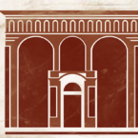by Rachel Dworkin
It should come as a surprise to no one that the earliest settlers of Chemung County were Native Americans. They left their mark in place names, arrowheads and pottery shards. The people who settled this region were not a monolithic group. They were different peoples from different parts of the northeast, they came in waves and they did not always get along.
Pre-contact, and for quite some time post-contact, the Haudenosaunee, whom we call the Iroquois, were the dominating force in what is now New York State and the Ohio River valley. The Iroquois had a confederacy or league which originally included the Mohawk, Oneida, Onondaga, Cayuga and Seneca nations with the Tuscaroras joining in 1722. There were other Iroquois-speaking peoples who were not part of the league. Sometimes they got along, sometimes they didn’t. All of these groups practice corn/beans/squash farming which supported larger populations than hunter-gatherer groups who lived around them.
Prior to European contact, the Iroquois League was aggressive in their pursuit of better farmlands and hunting grounds throughout the northeast and mid-Atlantic region. Their main enemies were the various Algonquian-speaking peoples. In fact, the name Iroquois is actually a mispronounced bit of derogatory Algonquian slang meaning “killer people.” By the time settlers were arriving in Jamestown, the Iroquois League had political dominance from the St. Lawrence River south to Virginia and actively controlled lands from the Hudson River valley west into Ohio.

So, how did that relate to Chemung County? Some of the earliest Dutch maps of the area indicate that it was settled by an Iroquois-speaking group known as the Andaste. During a trip in 1615, a young Frenchman Etienne Brulé visited the area in hopes of finding allies against the Iroquois who were resisting French efforts to colonize New York. He found 20 or so Andaste settlements along the Chemung and Susquehanna Rivers. The Andaste were, in fact, already fighting against the Seneca and, by the mid-1600s, had completely lost control of the land to the Seneca and their Cayugan allies. The land was set aside for hunting with very few actual settlements.
Around the time of the French and Indian War (1755-1760), things began to change as the Chemung Valley became a refuge of sorts for several groups who had been forced off their lands by white settlers. They were primarily Algonquin speakers and included the Mohegans, Shawnees and the Delawares. The name “Chemung” is a Delaware word meaning “place of the big horn” after where they apparently discovered a mammoth tusk.
These new settlers were understandably bitter and sided with the French during the war as well as several subsequent uprisings during the 1760s. During this period the Chemung Valley became a major staging ground for attacks against white settlements in Pennsylvania and New Jersey. So, in 1764, the British prevailed upon their Iroquois allies, specifically the Mohawk and Oneida, to deal with the Delawares living in the valley. An army 200 strong pushed through the area, burning settlements to the ground and driving their inhabitants west. For the next decade, the valley would remain largely uninhabited until the Revolutionary War when it would once again be a staging ground for attacks on white settlers, this time by the Iroquois.
Rachel Dworkin is the archivist at the Chemung County Historical Society. To learn more about the museum and read more from their blog, click here.
-
 1
1


0 Comments
Recommended Comments
There are no comments to display.
Create an account or sign in to comment
You need to be a member in order to leave a comment
Create an account
Sign up for a new account in our community. It's easy!
Register a new accountSign in
Already have an account? Sign in here.
Sign In Now